Chaque départ en expédition est un moment unique. Cette année, on a imaginé une journée spéciale pour vous permettre de goûter à l’effervescence du départ et de découvrir les coulisses à bord et à terre !
Ponton face au restaurant La Coquille, Concarneau
9h – 17h
Exposition photos, Caravane & Capsule Under The Pole
Rue du Moros, Concarneau
13h30
Point météo et mot d’Emmanuelle Périé-Bardout,
cofondatrice des expéditions Under The Pole
Rue du Moros, Concarneau
14h
Départ du Why
Ponton face au restaurant La Coquille, Concarneau
17h – 19h30
Débat projection film Under The Pole avec goûter offert
Base Explore, 1 rue des Senneurs, Concarneau
Évènement gratuit, ouvert à toutes et tous, petits et grands !
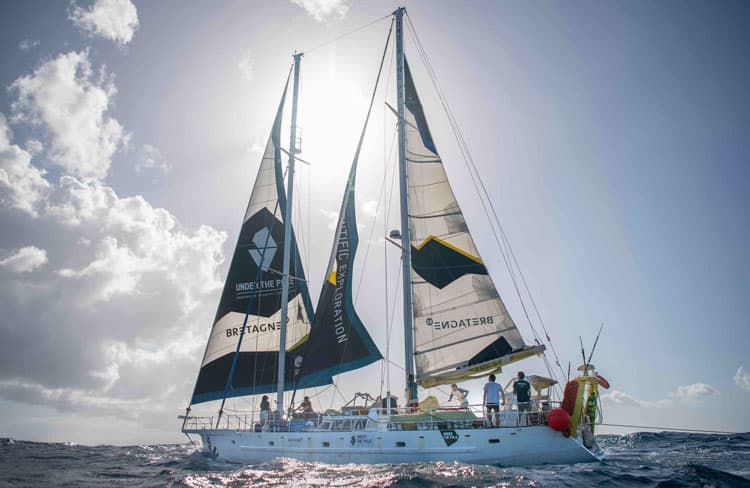
Comment s’est déroulée cette expédition en Guadeloupe, et avez-vous pu mener à bien les programmes scientifiques et de sensibilisation ?
E&G : C’était une mission intense car les équipes scientifiques sont venues en nombre – à tel point que nous avons dû louer un catamaran afin de les accueillir ! La phase exploratoire a duré quasiment un mois. Nous avons prospecté sur une douzaine de sites tout autour de la Guadeloupe à la recherche de sites mésophotiques avec des forêts animales marines.
Suite à cette phase exploratoire nous avons identifié deux sites : l’un au sud-ouest de la Guadeloupe, là où a été déroulé le plus gros du programme scientifique, et l’autre au sud, à côté de Pointe-à-Pitre. Nous avons pu accomplir une des grandes missions de DEEPLIFE jusqu’à présent : accueillir une grande diversité de scientifiques sur place avec différentes spécialités, comme l’ichtyologie avec Luiz Rocha de la California Academy of Sciences, l’Epifaune dirigé par Gran Canaria, nos deux directeurs scientifiques Laetitia Hédouin et Lorenzo Bramanti, avec nous pour affiner les protocoles.
Du côté de la sensibilisation, nous avons déployé deux missions : l’une grand public, avec par exemple l’AFP accueillie à bord pour un reportage écrit mais aussi des médias locaux et, en partenariat avec l’initiative Perpétuelle Planète de Rolex, s’est organisé un voyage de presse international qui va donner lieu à de nombreux articles dans le monde entier et qui relaie le travail de DEEPLIFE et d’UNDER THE POLE.
L’autre mission s’est réalisée avec le rectorat de Guadeloupe avec lequel nous avons été rapidement en contact, qui organisait à ce moment-là le Forum EDD, dédié à l’éducation à l’environnement et au développement durable. Dans ce cadre, nous avons accueilli environ 200 enfants qui ont pu visiter le WHY, amarré à la Marina de Rivière Sens spécialement pour l’occasion. Nous avons également tenu un stand au Forum, sur lequel nous avons pu expliquer aux nombreux publics le travail d’UNDER THE POLE, la zone mésophotique, la plongée scientifique, comment se déroulent les expéditions, les différents métiers qu’elles impliquent…
Au Svalbard, on était dans l’exploration pure. Aux Canaries, le site d’étude était plus défini. On imagine que tout est déjà connu, étudié, est-ce vraiment le cas ?
E&G : La phase d’exploration est omniprésente sur chaque mission ; elle prend toute son ampleur sur le Svalbard en particulier parce qu’on est dans l’inconnu à 99,9%. La spécificité de la mission aux Canaries était effectivement que le site était connu : on a gagné du temps sur la partie exploratoire. Néanmoins sur le deuxième mois là-bas, nous sommes partis en exploration et sur certains sites, on a développé une partie du programme scientifique. C’est toujours la même approche : l’année prochaine en Méditerranée, il y aura deux mois d’exploration sur toute la côte Nord, qui amèneront au choix de trois sites sur lesquels déployer le programme scientifique. Cette démarche analogue s’explique tout simplement par la méconnaissance actuelle de la zone mésophotique.
C’est aussi ce qu’il s’est passé en Guadeloupe : il y avait assez peu de publications scientifiques sur le sujet, et c’est pour ça qu’on a commencé par une phase exploratoire sur tous les versants de la Guadeloupe, avec de nombreuses plongées jusqu’à 160 mètres de profondeur. Il fallait prendre en compte la topographie car il y avait certains sites sur lesquels on ne pouvait pas plonger très profondément, d’autres avec beaucoup de vent qui rend les plongées quotidiennes moins évidentes.
Comment étaient les conditions de plongée sur les sites que vous avez explorés et quelles sont les adaptations qui ont dû être faites au niveau matériel ?
E&G : Les configurations de nos plongées sont assez éprouvées, avec toujours des adaptations environnementales, par exemple des combinaisons étanches au Spitzberg ou des combinaisons humides en Guadeloupe. Aux Canaries, nous avions des combinaisons étanches mais légères, car il s’agit toujours de plongée profonde, avec des scaphandres lourds, comme nous avons l’habitude de le faire. Ici en Guadeloupe, nous avons beaucoup navigué en propulseurs car il y avait de longues distances à couvrir, avec parfois des courants très forts.
Le mot de la fin ?
E&G : Contrairement au Svalbard, aux Canaries, et à ce qu’on connaît des forêts animales marines où il y a toujours une espèce ingénieure qui prédomine, en Guadeloupe, où les récifs coralliens ont été extrêmement endommagés (maladie, pollution, réchauffement climatique), il n’y a pas une espèce ingénieure qui a pris le dessus mais un melting-pot de gorgones, d’éponges, de coraux noirs. C’est une chose à laquelle Lorenzo Bramanti (directeur scientifique, ndlr) ne s’attendait pas, et nous avons très hâte de découvrir les premiers résultats et bilans scientifiques sur le fonctionnement de ces forêts animales marines !
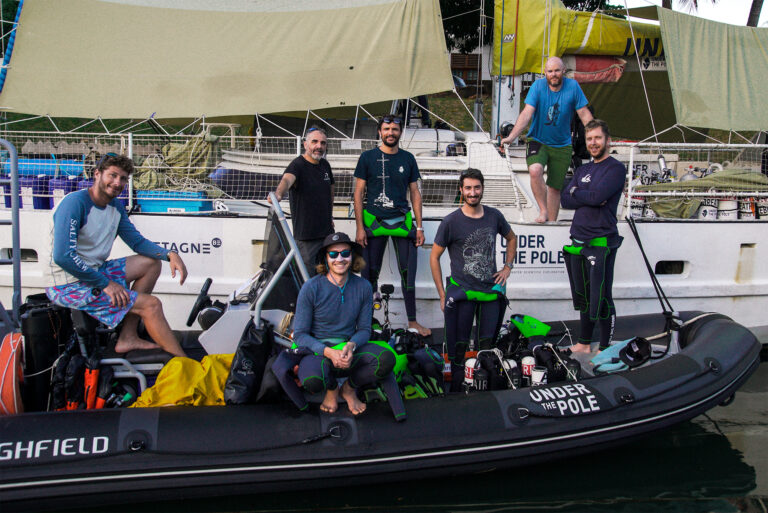
The third mission of the DEEPLIFE program has started! After the Svalbard and Canary Islands, the WHY is now based in Guadeloupe (French Carribean) for two months.
Why is UNDER THE POLE leading an expedition in the Caribbean?
The Caribbean islands are among the richest areas of biodiversity in the world, but also the most threatened. Within this archipelago, Guadeloupe has seabeds favourable to the development of marine animal forests (MAFs), which form true hotspots of underwater biodiversity.
The DEEPLIFE expedition in the Caribbean, conducted in collaboration with the CNRS, aims to explore and study the deep MAFs of Guadeloupe, to understand the role of mesophotic MAFs (30-200m) for marine biodiversity, and the differences in roles between those of the mesophotic zone and those of the surface zone.
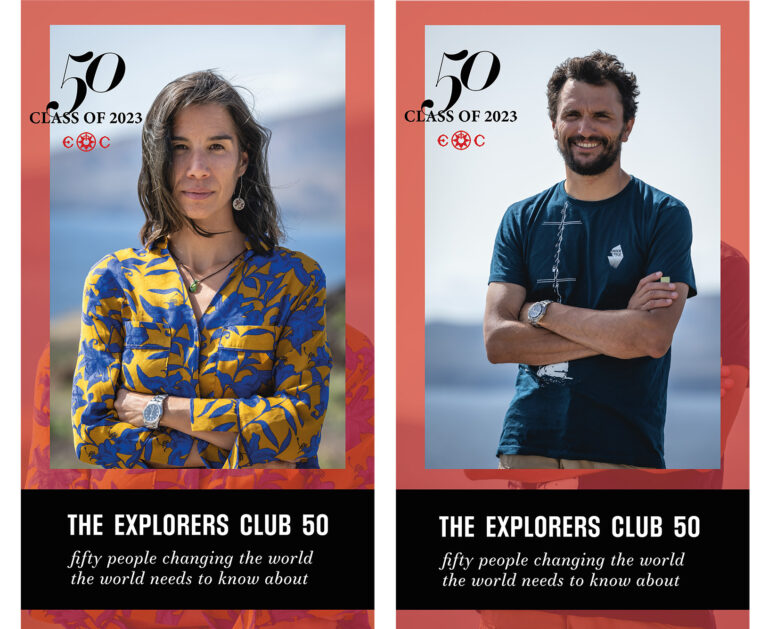
The entire UNDER THE POLE team is proud to announce thatEmmanuelle et Ghislain BARDOUT font chacun officiellement partie des 50 nominés 2023 de l’EXPLORERS CLUB, The Explorers Club has been supporting scientific expeditions of all disciplines around the world for over a century.
The EC50 initiative was created in 2020 to amplify and make science communication more inclusive, and to represent the many voices of the global scientific community.
This nomination which represents a great recognition of the work done by UNDER THE POLE for 15 years and will help resonate the DEEPLIFE program, whose main goals are to deepen scientific knowledge of the mesophotic zone (30-200m), and to raise awareness for its preservation.
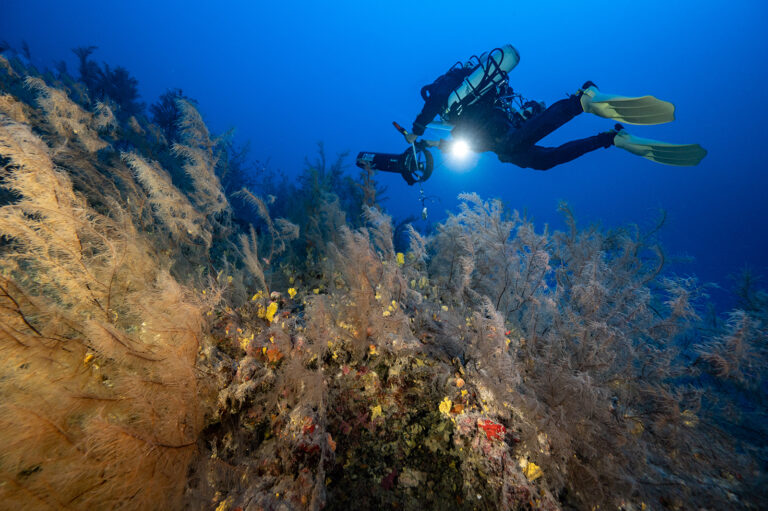
After 2 months of research on temperate marine forests, the WHY has set sail again with a crew in charge of convoying it to the Caribbean for the continuation of the DEEPLIFE scientific program in 2023.
Ce nouveau départ marque la conclusion de l’expédition aux Canaries, qui aura permis de mener des études scientifiques en plongée sur 4 îles de l’archipel (Lanzarote, Gran Canaria, Fuerteventura, El Hierro), avec pour principaux objectifs de :
- Better understand the functioning of marine forests of black coral, in order to highlight the services they provide to the marine biodiversity of the archipelago,
- Determine the depths and surface of the coral forest to be protected to maintain its ecological role,
- Establish the first forest of an ecological corridor for black corals in the Canary Islands,
- Study at a regional scale the populations of mesophotic black coral to quantify the connectivity and resilience of corals on the archipelago.
- To explore the deep biodiversity in the framework of the creation of a marine park in Gran Canaria.
- To raise awareness of local authorities, scientists and the general public about local mesophotic habitats with several interventions of the UNDER THE POLE team on the archipelago.
- Carrying out scientific deep dives that allowed us to explore the mesophotic zone of the Canary Islands to a depth of 203 m..

UNDER THE POLE a le privilège et la joie d’intégrer officiellement la liste des membres de l’IUCN international.
L’Union Internationale de Conservation de la Nature est reconnue pour sa crédibilité scientifique, ses connaissances, et son rôle rassembleur unique au monde. Cette nomination est le résultat du travail mené depuis 2008 en faveur de la biodiversité marine, et ce tant au niveau scientifique qu’auprès du public.
Already integrated in the French commissions concerning Education and the Ocean as an expert, UNDER THE POLE is delighted to join this network.
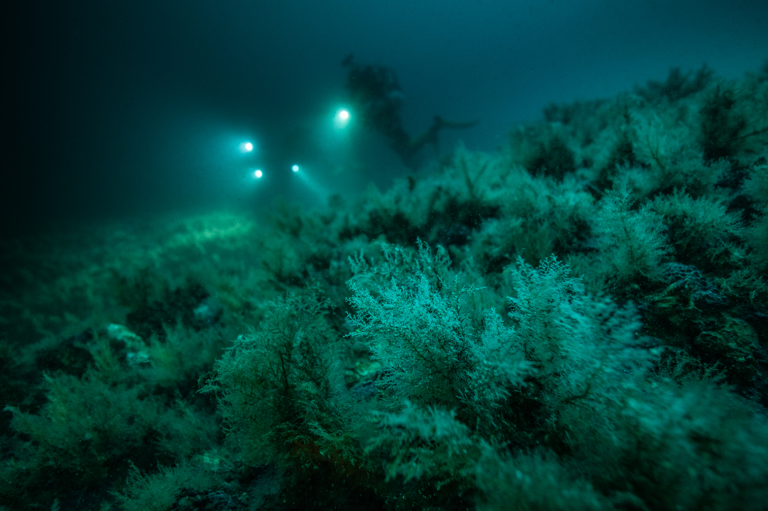
Two weeks after leaving Svalbard, Emmanuelle and Ghislain BARDOUT answer our questions and look back on the first polar expedition of the scientific program DEEPLIFE • 2021-2030.
• During the first part of the polar expedition, you discovered a small Arctic marine animal forest in the form of an "anemone garden". Have you discovered any others since then, how big are they, and were you able to implement the originally planned DEEPLIFE science program?
Although we observed interesting and varied ecosystems on each dive, we did not find any real animal forests during the first weeks. A few days before Lorenzo's (DEEPLIFE's scientific co-director) departure, we located a nice hydroids forest between 40 and 76 m depth.
We then spent about ten days on this site to carry out the scientific protocol: installation of sensors and sediment traps, taking biological samples, photo-quadra, taking environmental data (CTD, water filtration). We were really able to observe the richness inherent to a forest and see that they can develop in the high Arctic. The samples are kept on board the WHY, which is currently returning to France, and will be recovered by the scientists for analysis. This discovery is a first step and a reference for future research on marine animal forests in the polar regions.
• How did the diving conditions evolve between the beginning of the scientific program in April and now in June?
Favorably! The beginning was rough: the sub-zero temperatures (-20°C / -30°C with the effect of the wind), the wind and the sea conditions made the first three weeks of prospecting difficult between the end of April and mid-May for the divers and the team on the surface. The conditions were then much more bearable. The water and surface temperature increased significantly, and the weather offered periods of calm, making the work on deck much easier. One point of reference: at the end of the expedition, we could equip the divers without gloves!
• For several members of the team currently on board the WHY, this is not the first time they have been in this very specific environment of Svalbard. Have you noticed any changes in the Arctic ecosystems since your last visit to the archipelago?
Emmanuelle worked as a mate on the sailing ship Southern Star for several months in Svalbard in 2006. Martin came for several years as head of the French scientific base in Ny-Alesund. Although it is difficult to compare landscapes with distant memories, it is unfortunately obvious that the retreat of the glaciers is rapid and visible (the King's Glacier has retreated by 3 km in 10 years according to scientists). When you consider that 57% of the area is made up of glaciers and that Svalbard is the place in the world with the greatest temperature increases, this is extremely worrying.
• This type of expedition always involves a good dose of the unexpected: that's what makes them so interesting and challenging? Is there a particular moment that stands out in your mind?
The breakdown of our main generator, necessary for the use of our watermaker, certainly made the comfort on board the WHY "challenging"...and forced us to be very economical with water. In spite of this, we kept a great atmosphere and energy, the team really invested in making the program a success. The encounter with the wildlife of Svalbard and the breathtaking landscapes also offered us some nice surprises such as polar bears, walruses, seals, foxes, whales, reindeer... Finally, the days spent in the north of Spitsbergen, the navigation in the middle of the ice and the uncertain dives in a region where the maps are imprecise are all moments that remind us how rare underwater exploration is there. Each of these observations was a reminder that even if the conditions are sometimes difficult, it is an immense privilege to navigate and dive in these regions of our planet.
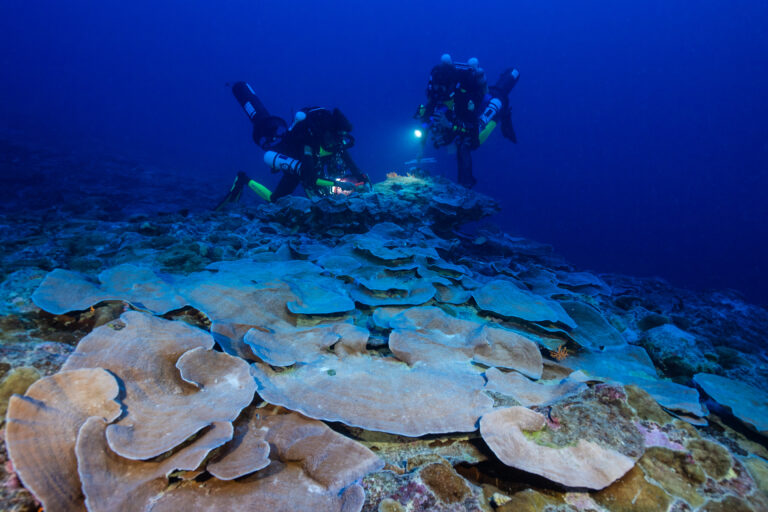
A new scientific paper, based on diving studies carried out during the DEEPHOPE program and conducted in collaboration between CNRS / CRIOBE and UNDER THE POLE, reveals that coral diversity is unexpectedly higher in the mesophotic range (40-60m) than in shallow reefs. Indeed, this mid-zone hosts coral assemblages typical of both ranges, the shallow and deep reefs; thus, it could act as a safeguard of biodiversity.
At the same time, while the diversity of shallow reefs is similar among islands, the diversity of mesophotic reefs differs from site to site. These pioneering findings challenge our perception of conservation needs.
New insights emerge from this work: effective coral reef conservation requires considering mesophotic depths along with site-specific measures..
This is particularly relevant in the light of ever-increasing human pressures and climate change effects, which seem to be less severe with increasing depth.
Read the full scientific article in the journal Diversity and Distributions
DEEPLIFE scientific co-directeur & CNRS/LECOB researcher, Lorenzo BRAMANTI answers our questions on marine animal forests and looks back at the first discoveries of the expedition. (In French)
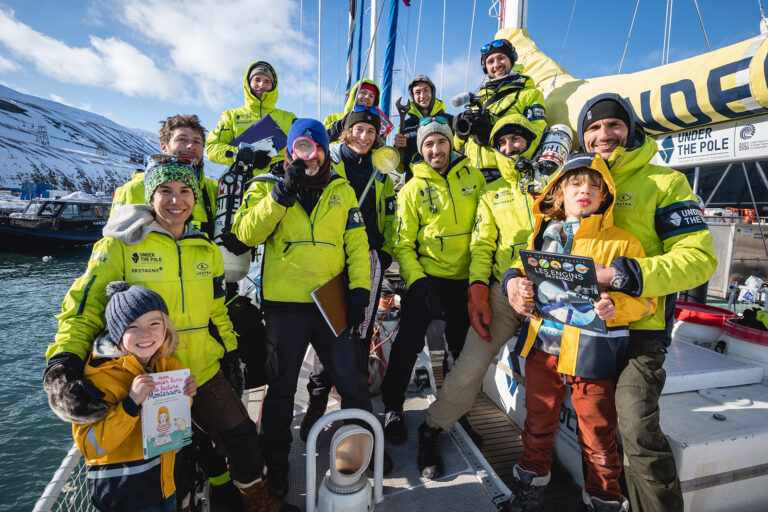
How is this return to the polar zone going?
It seemed logical to start UNDER THE POLE IV • DEEPLIFE in the Arctic. It is not the easiest option because it requires specific logistics and polar diving remains a difficult and tiring practice. Especially in our study area, which involves deep dives (here, 80-100m) and long dives. But the automatisms linked to work and life in the polar zone quickly return.
From a scientific point of view, we are in unknown territory. Very few dives have been made in these regions, especially when you move away from the bases, and there is no information on what is found below 20-30 meters. But this is also what makes this mission exciting, one of those where you get back to exploration by adding a scientific dimension to it.
Beyond the mission, we deeply love these regions which, like magnets, always make us return to them. Here, there is no internet connection, few human traces, a harsh climate but great lights and scenery, and the privilege of witnessing a raw and wild world.
- After 15 days of expedition, what are the first discoveries you have made, or the first difficulties you have encountered?
Our objective is to find small Arctic marine animal forests and to study the biodiversity of the animals that structure them (engineer species) as well as the animals that live in the forest (fish, invertebrates, etc.). This is even more interesting in the polar region as climate change effects are rapid and significant. The glacier at the bottom of King's Bay, where we are currently diving, has retreated by nearly 4 km in 15 years. The data collected will make it possible in the future to monitor the evolution of the sites studied.
This first one month loop is mainly dedicated to the prospecting of sites with Lorenzo Bramanti, deep diver, research director at CNRS and scientific co-director of DEEPLIFE. So far, we have found a small arctic animal forest that we would more accurately describe as "gardens" composed of anemones. Many species of sponges are also present.
We made the choice to arrive early in the season in order to avoid the "plankton bloom" as much as possible and to benefit from a better visibility in the water, but the downside is a colder and very windy period. However, these organisms often thrive in exposed areas, with current, which makes us dependent on the weather. Each dive requires a lot of energy from the whole crew to prepare the suits, to equip the divers, to thaw the equipment and to maintain it, to inflate the tanks... We have to find the necessary balance between the intense rhythm of the work while preserving the tiredness of the group.
How does one go from writing the project to realizing it?
That's the magic of an expedition. There is a world of difference between writing a project and carrying it out in the field. There are logistical pitfalls, financial difficulties, and the unforeseen which is everywhere like the air which does not like a vacuum! It is an ecosystem that allows UNDER THE POLE to exist, a crew that is much larger than the one that is ultimately on the WHY. Partners who, through their trust, allow us to carry out this research, a team on land and in the field whose investment in time and energy goes beyond the framework of simple work, scientists who ask questions and process samples, analyse photos and publish scientific articles once the expedition is over.
Do you have a story to tell us?
In Ny-Alesund, the scientific base in King's Bay, we met Tommy Jegou, who is currently a logistician for the AWIPEV (Franco-German base). Tommy was on a civic service mission at UNDER THE POLE in 2018 and participated in the whole CAPSULE mission in Moorea. He arrived a month ago in Svalbard where he will spend a year. It was really nice to see him on the dock when we arrived and to meet him on board. For two hours, he guided us through the buildings and scientific installations of the base, explaining the functioning, the scientific protocols and the cohabitation between the different nationalities present.
Such a reunion on the boundaries of the world!
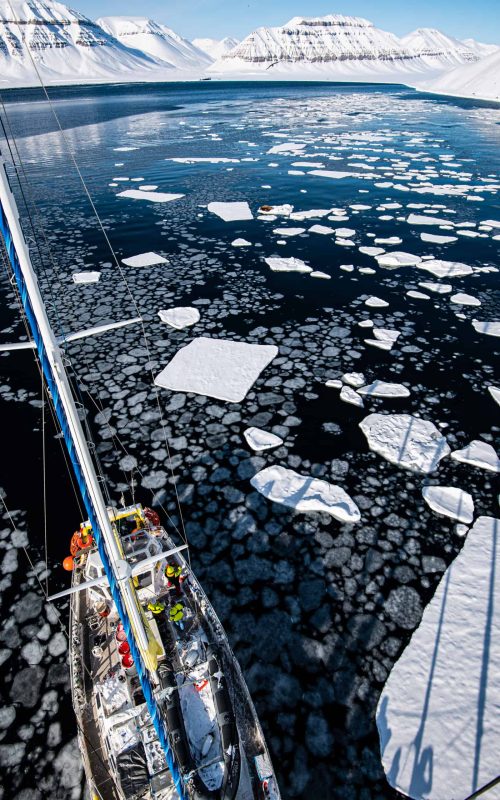
After almost three years in the Pacific waters, we had almost forgotten. The cold. The humidity. The bad weather. The snow. The condensation inside. The stove that backs up and smokes us when we close the lazarette door. The filter under the sink that has to be cleaned before and after washing the dishes. The doubt that creeps in when trying on Robin and Tom's TPS (survival suit) - "is this really sensible?" - and the feeling of being in our place as soon as we find ourselves out in the open. Putting on four layers of clothing before going on watch. But also the day that stretches on and on. The low-angled light and the fulmar petrels hovering over a golden ocean. The satisfaction of feeling the WHY vibrate under sail. The gradual appearance of the first patches of pack ice. The sound of ice on the hull. All these details that are so many emotions and that come back by little touches until they are familiar to us again. These few days before the WHY becomes our "home" again.
For this northern convoy, we embarked a particular crew, the team of "the office" of Concarneau, the ones who make Under The Pole exists daily. Neither sailors nor professional divers, they are responsible for logistics, scientific coordination, communication, administrative management, awareness, and sponsorship. And to carry out these difficult and sometimes thankless tasks, we are convinced that it is necessary to be nourished by the ground. So we decided to make this crossing from Tromsø to the Svalbard archipelago together. We still had to seize the weather window allowing us to go up in this first half of April, which is quite early in the season. Despite the cold, the wind, the sea, and the seasickness, the crew was enthusiastic and willing, taking the watches, helping in the kitchen and for the maneuvers.
The success of an expedition depends on a sum of accomplished missions, for the discovery, the science, the image, and the awareness. But these successes and the memories that will remain are conditioned by the atmosphere on board. The chemistry that is created. And on Thursday night, when we were all on deck to watch the WHY make its way through the ice floes, we could see in the crew’s eyes the emotion that is specific to the discovery of the polar regions. This magnetism which, despite the harshness of the climate, makes us want to come back again and again.
In a few days, the "expedition" team will arrive in Longyearbyen to start the dives dedicated to the scientific program on the marine animal forests of the mesophotic zone. But it is this small and heterogeneous team that will have led the WHY to its destination. At 78°16 North exactly!
Emmanuelle & Ghislain
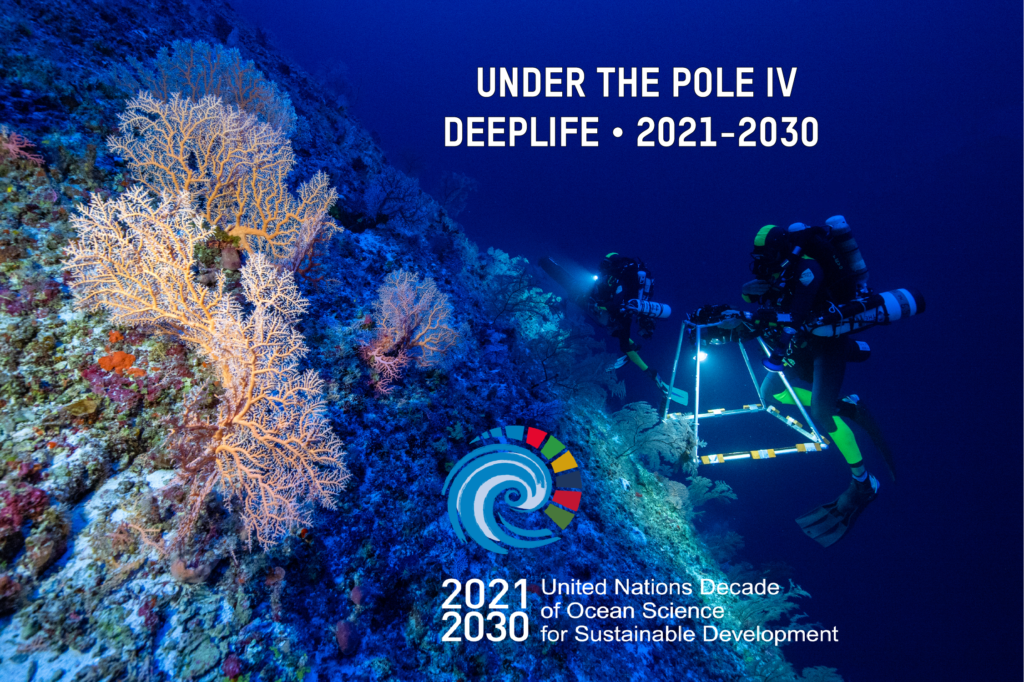
We are proud to let you know thatUNDER THE POLE IV • DEEPLIFE • 2021-2030 is officially recognized as an officiel project of the United Nations Decade of ocean sciences for sustainable development (the "Ocean Decade" project), coordinated by the Intergovernmental Oceanographic Commission of UNESCO.
The mission of the Ocean Decade is to develop solutions based on ocean sciences for sustainable development, creating the link between mens and ocean.
Travelling around the world, carried out by the French National Centre for Scientific Research and a consortium of international scientists,UNDER THE POLE IV • DEEPLIFE • 2021-2030 project will contribute to:
– Collecting the knowledge necessary to understand the effects of multiple stress factors on the underwater animal forests of the mesophotic zone (30-200 m of depth),
– Developing solutions to protect, manage and restore habitats and biodiversity,
– Highlighting the invaluable value of the ocean and the ressources it provides.
The scientific directors of the project are Laëtitia Hedouin (French National Centre for Scientific Research / French Island Research Center and Environmental Observatory) and Lorenzo Bramanti (French National Centre for Scientific Research / French Laboratory of Ecogeochemistry of Benthic Environments).For any further information related to the program, please contact our scientific coordinator Myrina Boulais: myrina@underthepole.com.
Thank to all of our sponsors and partners who have confidence in us, and without whom our awareness and research programs would just not be possible.
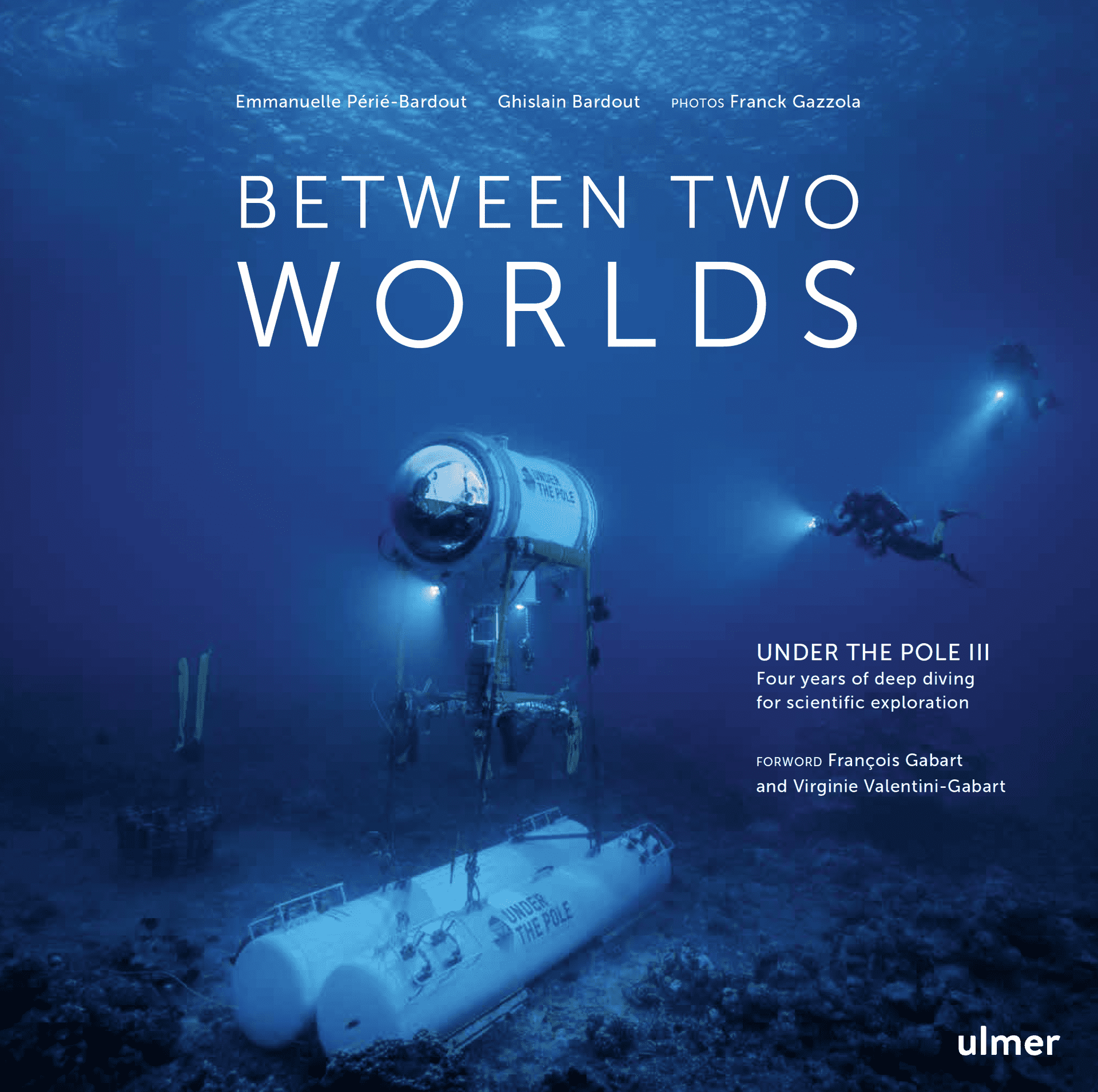
It is a pleasure to share the story in pictures of these four years of underwater exploration of the mesophotic zone, from the Arctic to French Polynesia, as well as the CAPSULE program.
A book written by Emmanuelle and Ghislain Bardout, published by Ulmer editions, photos taken by Franck Gazzola and a preface written by François Gabart and Virginie Valentini-Gabart. Thank you all for your contribution.
Don't miss the latest news and previews!
Data Protection Act of 6 January 1978 : the undersigned is informed that his personal data will be collected and processed electronically by the Club. This data will be stored by the UNDER THE POLE for administrative purposes for a period of 3 years. The undersigned is informed of his right of access, communication and rectification, in case of data proven inaccuracy as well as his right to oppose the processing and / or publication of his data for legitimate reasons. To do so, simply send an email to the following address: contact@underthepole.com
At your service
Data Protection Act of 6 January 1978 : the undersigned is informed that his personal data will be collected and processed electronically by the Club. This data will be stored by the UNDER THE POLE for administrative purposes for a period of 3 years. The undersigned is informed of his right of access, communication and rectification, in case of data proven inaccuracy as well as his right to oppose the processing and / or publication of his data for legitimate reasons. To do so, simply send an email to the following address: contact@underthepole.com
Partnership
Get a file
Data Protection Act of 6 January 1978 : the undersigned is informed that his personal data will be collected and processed electronically by the Club. This data will be stored by the UNDER THE POLE for administrative purposes for a period of 3 years. The undersigned is informed of his right of access, communication and rectification, in case of data proven inaccuracy as well as his right to oppose the processing and / or publication of his data for legitimate reasons. To do so, simply send an email to the following address: contact@underthepole.com
Data Protection Act of 6 January 1978 : the undersigned is informed that his personal data will be collected and processed electronically by the Club. This data will be stored by the UNDER THE POLE for administrative purposes for a period of 3 years. The undersigned is informed of his right of access, communication and rectification, in case of data proven inaccuracy as well as his right to oppose the processing and / or publication of his data for legitimate reasons. To do so, simply send an email to the following address: contact@underthepole.com